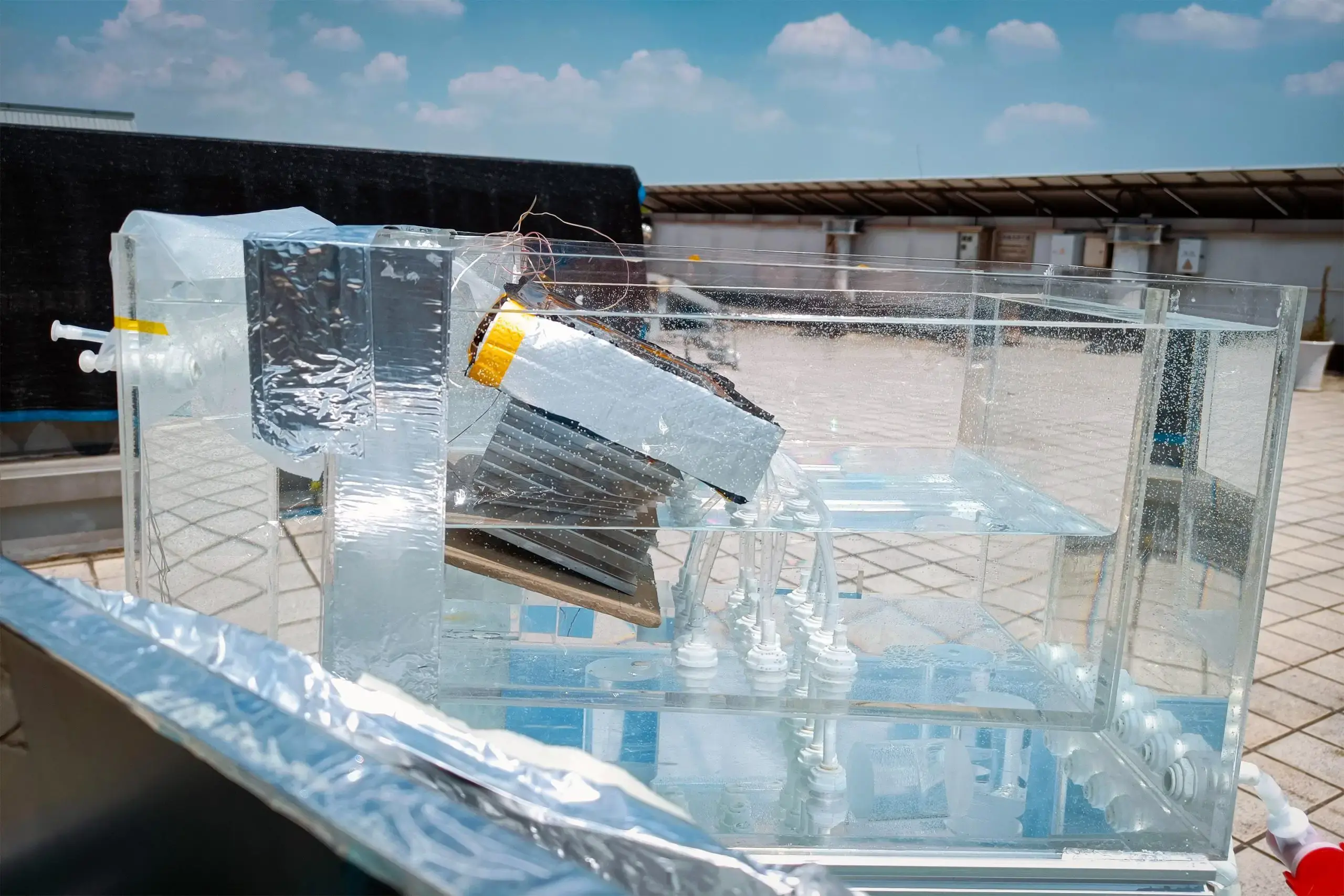Interesting, but very light on details about “cheaper than tapwater”. And the title is clickbait; the system they have is a small scale prototype and the developers only estimate that it would be cheaper than US tap water when scaled up. There is no further detail on costs in the article. Here is the extent of what it says:
the team estimates that the overall cost of running the system [when scaled up] would be cheaper than what it costs to produce tap water in the United States.
The article doesn’t provide any more info on the costs than the above quote. Dunno if the actual journal article provides more detail; I don’t have access. But I would need to see a lot more about how they produced that estimate and how uncertain the estimate is.
You could always try and read the paper to get that information.
Invention number #3425641 from MIT that never saw the light of the day.
How many have? You seem to know a lot about it
Nestlé has entered the chat
What is the magical method we are pimping this week and what is the fatal flaw which will be revealed that makes it entirely impractical for commercial or industrial scale uses? I ask because we seem to (re-)invent various version of the solar still (oh, look - that’s what they’re doing!) every year or two and it’s revolutionary every time because the energy is free and all that’s required is a way to scale it up, prevent the scaled up version from destroying the local ecosystem through hypersalination around the plant when operated at the level needed for efficient collection and distribution to a sizable population, and figure out how to move the billions of tons of water required in a typical year for a medium sized city/population center from the desalination location to a distribution system.
Also, sorry for being shitty. I’m in an especially intolerant mood today.
It’s a solar still that can operate continuously without maintenance as it doesn’t get clogged with salt. That’s a pretty nifty and practical achievement.
They’re also proposing it be used at household scale, because the system is so small, rather than scaled up to factory scale.
Oh god, can you imagine the brine disposal problem with home use? People still pour motor oil down drains.
This might have an interesting potential yet I am quite sceptical.
Desalination doesn’t just get rid off the salt but also most of the water’s minerals. Lack of minerals in the water used everyday can be harmful for human health and also for agriculture. This poor water can’t provide enough minerals or worst even adsorb the ones from the human body same with the soil. This is why many desalination plants have remineralization process by adding some or reusing minerals extracted from the brine.
If such a system is deployed it would have to address this problem as well as providing solutions to dispose or utilize the brine.
Remineralization of desalinated water: Methods and environmental impact
Israeli Scientists Fear Public Health Risks from Desalinated Seawater
Remineralization is a well known and solved problem in existing processes (RO and distillation). I personally built and ran a high performance RO that produced < 5ppm TDS water on my farm, and experienced the ill effects of drinking demineralized water. Excess thirst, urination and muscle cramps.
The WHO published an excellent study on this issue. The issue is not an actual lack of minerals, as we get very little of our minerals from water, but the fact that your body is not designed to absorb water with zero solutes. Effectively the sensors in your gut go out of span and you end up dumping solutes from your bloodstream instead.
The solution is very simple and cheap, that is to add any salt so that your body can detect it. Sodium chloride is fine, being “normal salt” of course, but I add potassium chloride as most of us get too much sodium as is. This is available as “salt substitute”.
A pinch in a glass or a tablespoon in a 5 gallon jug is enough to completely eliminate any ill effects. Commercially as mentioned you can blend back some of the brine stream. It’s not really a problem as long as you don’t effectively deliver DI water to your customers by accident.
Is there a compelling and obvious reason we can’t dilute brine back into the water we let outflow from our waste systems into the oceans rather than dumping it all at once? or maybe dribble flow at river deltas or so?
Large scale desalination produces a lot of brine. There’s no way to release it in small amounts because it isn’t produced in small amounts.
You could but estuaries are incredibly important ecosystems and increased salinity might be harmful to them. Arguably the best place is oceanic areas with strong currents to promote brine mixing with normal seawater. The worst impacts are where the brine sinks and does not mix, creating a dead zone on the sea floor.
The best place is into the desert to make salt like they do in Africa.
Maybe. Anti-biofouling chemicals used by most systems are extremely toxic. If a system avoids using those somehow then this can work.
Does this system use those tho. I thought this was a chem free sunstill
It might be. But I don’t consider this to be a real system until it’s been scaled up and has the cost established. Biofouling isn’t likely to become much of an issue until the system is in use for a time. But since it has no filters it might not need it, I’m not sure.
yes they do that in some facilities, it’s called sewer discharge and can be quiet effective in a well monitored and designed system, surface water discharge uses a similar method of dribbling brine into the water as part of a system that uses ocean currents and tides to disperse the brine back into the ocean.
While brine return is a complicated and important step it’s really not some major ecosystem destroying problem in any of the modern installs - it’s just important to model and monitor the system, the same way sewage systems find a location where currents carry stuff away and allow it to disperse brine return systems do, with brine it’s just stuff that belongs in the ocean anyway so it all mixes back in fairly quickly.
A lot of people seem to like to learn the difficulties involved in a new tech and then just use negative thinking to exaggerate it into a reason the tech will never be useful even after decades of improvement and investment. There are huge projects around the world which have done really positive things for local ecosystems, they’re even refilling the sea of galilee after decades of over extraction and allowing groundwater levels to restore.
The brine from this system is not very concentrated
When I first read about this I thought, why not outflow into a tiered salt mine and let evaporation do its thing
Been following their progress for awhile. I hope they can get to mass production soon.
This huge! A massive boon for coastal areas if it works at scale, which could help avert the looming water wars.
The water wars prediction is especially interesting because when i was young they always pointed to a few locations where it would happen first, and top of the list was almost always Golan Heights where there were already water related tensions and conflict - however what actually happened is Israel invested in a huge desalination project which now supplies all their tap water, they also supply water to their neighbour Jordan who pays in solar power that’s used to run the system.
Saudi Arabia likewise has eased tensions within it’s borders through huge desalination investment, annalists predicted that competition for water resources would tear the country apart but again what actually happened is they invested in desalination which currently supplies around half their tap water and it’s helped add perceived legitimacy and gained support for the ruling family. Not people i like seeing gaining support but a far better outcome than the chaos and human suffering which was predicted.
Agreed; not the most palatable folks, but an increase in sustainability is always positive :)










